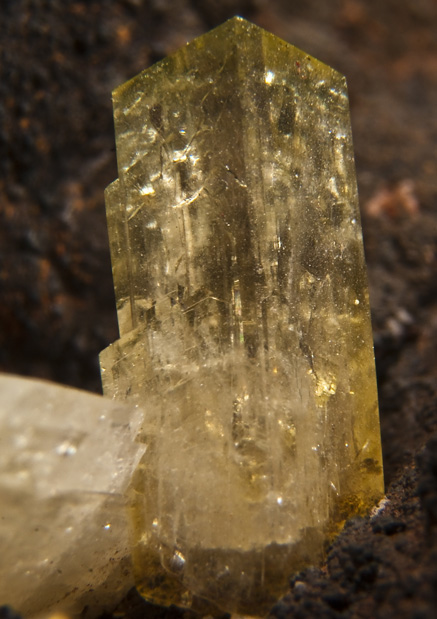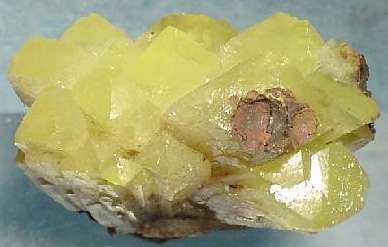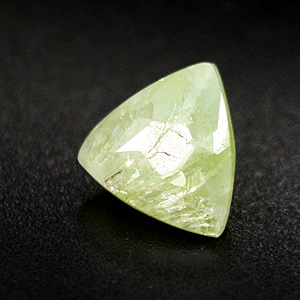Adamite
Adamite is a zinc arsenate mineral that occurs in the oxidized zone of zinc- and arsenic-bearing mineral deposits. The oxidized zone is the decomposed or weathered exposed upper part of a mineral vein. [1]

Adamite
Photo by Rob Lavinsky, iRocks.com - released under CC-BY-SA-3.0 License
Adamite was named after Gilbert-Joseph Adam, the French mineralogist (1795-1881), who first discovered the stone. Pure Adamite would be colorless, but colorless specimens are rare. It typically has the yellow / lime color, as seen in the examples in the photos, due to iron and copper molecules in the mineral structure. Adamite's chemical name is zinc arsenate hydroxide, and it has the mineral structure Zn2AsO4OH. [1]
Adamite mineral is found in Mapimi (in the Durango region of Mexico), South Western USA (California, Arizona and Utah), France, England (Cornwall and Cumbria), Namibia, Greece and South Australia. It occurs in association with smithsonite, hemimorphite, scorodite, olivenite, calcite, quartz and Fe-Mn oxides. [2]
Adamite Varieties
Although adamite's most common color is bright yellowish green, other varieties of adamite may be colorless, or have white or red coloration. [3] Several varieties of Adamite occur, including: Alumino Adamite (Aluminum bearing, found in Greece and Morocco, blue color); Cobaltoan Adamite (Cobalt bearing, rose-violet hue); Cuprian Adamite (contains copper, green color, found in Greece, Germany, Australia, Austria et.al.); Manganoan Adamite (contains Manganese, found in Greece, Utah USA, and Mexico); and Nickeloan Adamite (contains Nickel, found in Greece).
Adamite is isostructural (meaning that it has the same molecular structure) as olivenite (copper arsenate hydroxide.) It can be seen that cuprian adamite (aka. cuproadamite) is an intermediary between adamite and olivenite [4] , and that the amounts of zinc and copper in the mineral are variable.
Adamite tends to form in a habit that is somewhere between botyroidal (globules) and druse aka. druzy (a "carpet" of minute crystals). Together with its typical green coloration, it is usually easily distinguished from other gemstone varieties. [4]
Adamite has a hardness of 3.5 (Mohs scale), quite soft and so is not ideally suited to use as a faceted gemstone. However as can be seen from the second image, it is occasionally faceted for collectors. Adamite has a density of 4.4g/cm3 and may have the interesting properties of fluorescence and phosphorescence under ultraviolet light. [4]
Adamite Images

Adamite
Photo by Didier Descouens - released under CCA 3.0 Unported License

Adamite - faceted
1.32 carat trilliant cut; 6.6 x 6.4 x 4.2mm.
Image supplied by Freakingcat Gems
Adamite - Sources Referenced:
[1] http://en.wikipedia.org/wiki/Adamite
[2] http://rruff.geo.arizona.edu/doclib/hom/adamite.pdf
[3] http://www.minerals.net/mineral/phosphat/adamite/adamite.htm
[4] http://www.galleries.com/minerals/phosphat/adamite/adamite.htm
[5] http://www.mindat.org/min-21.html
Back to the Gemstones List home page - over 160 gemstones explored!
Please feel free to link to this page - copy / paste the text below: (click to select)
Privacy Policy | Cookie Policy | GDPR | About This Site / Terms

© gemstoneslist.com


